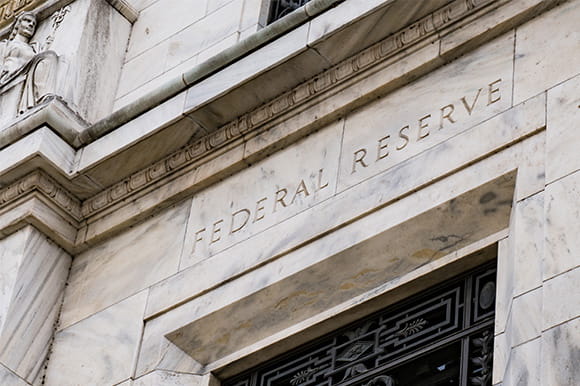How the Federal Reserve Affects Rates

Have you ever wondered why your savings account suddenly starts earning more interest, or your variable mortgage rate changes? The answer can often be traced back to an organization you may have heard of but might not know much about: the Federal Reserve. Let's take a deeper look at how this powerful institution impacts your everyday finances.
What is the Federal Reserve?
The Federal Reserve, often called "the Fed," is the central bank of the United States. Established in 1913, it was created by Congress to provide our country with a safe, flexible, and stable monetary and financial system. President Woodrow Wilson originally signed the Federal Reserve Act into law. While it’s been amended over the years, it still guides how the Federal Reserve functions.
How does the Federal Reserve operate?
The Federal Reserve System is made up of three main entities, each serving a distinct purpose.
The Federal Reserve Board of Governors, located in Washington, D.C., governs the operations of the Federal Reserve System to ensure it meets the responsibilities outlined in the Federal Reserve Act. They also oversee the 12 Federal Reserve Banks.
The 12 Federal Reserve Banks, with branches across the country, act as the operating arms of the Federal Reserve System. Their goal is to help maintain a sound financial system and healthy economy by controlling the money supply and interest rates. One of these branches, the Philadelphia Fed, is right here in our backyard. It’s home to the Federal Reserve’s Third District, serving Delaware, southern New Jersey, and eastern and central Pennsylvania.
The Federal Open Market Committee (FOMC) is the heart of the Fed's operations. This group of 12 voting members meets at least eight times yearly to make crucial policy decisions that help maintain stable prices, reduce inflation, and promote economic growth.

The federal funds rate and its impact on spending
The FOMC also sets the federal funds rate, which impacts everything from annual percentage yields on savings accounts to credit card rates. When the Fed adjusts the federal funds rate, banks and credit unions must take these changes into account.
How credit unions and banks are impacted
Whenever the Fed raises or lowers rates, credit unions and banks typically correct their interest rates on loans and deposits to reflect the changes. However, unlike banks, credit unions are non-profit and member-owned. This often allows them to offer more competitive savings and loan rates than banks.
How consumers are impacted
If the Fed decides to raise rates, it becomes more expensive for banks to borrow money. This drives up interest rates on consumer loans and, in turn, makes it more challenging to borrow money or pay it back. When rates are lower, money flow increases, and borrowing is cheaper. In contrast, higher rates have a positive effect on savings account earnings.
How the economy is impacted
The Fed’s decision to raise or lower rates also trickles down to the economy, significantly influencing the stock market. When the Fed cuts rates, stock prices typically jump while borrowing costs drop, creating a more favorable spending environment. When the Fed raises rates, stock valuations become lower as borrowing costs increase.
Perhaps one of the best illustrations of the Federal Reserve’s considerable influence is evident in its response to the COVID-19 pandemic. In March 2020, the Fed stepped in and implemented actions that kept credit flowing and limited the overall financial damage sparked by the pandemic. Among its many measures, the Fed cut the federal funds rate to nearly 0%, allowing consumers to continue to borrow money, and created programs to help small businesses stay afloat.
The bigger picture
Paying attention to the actions of the Federal Reserve can help you get a better handle on general economic conditions, which, in turn, can help you make smarter financial decisions. For example, if the FMOC lowers rates, it may be an excellent opportunity to refinance your existing loans. When rates go up, you may want to put more away, knowing you’ll get a better return on your savings. Understanding the role of the Federal Reserve can help us all make more informed decisions about our money.
